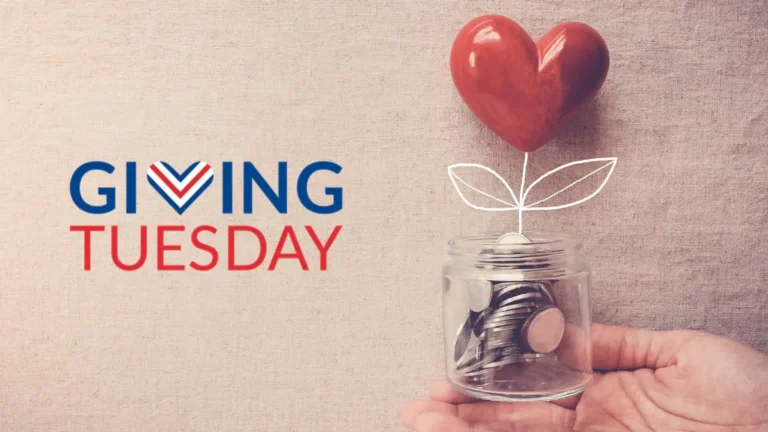In-kind donations, contributions of goods, services, or professional expertise instead of cash, are fundamental for sustaining and expanding the reach of charities across the UK. These non-monetary gifts range from everyday items like clothing and hygiene products to highly specialised support such as IT infrastructure, legal services, and consultancy. For many charitable organisations, in-kind support bridges essential gaps, reduces operational costs, and allows them to deliver more value directly to the communities they serve.
In the UK’s charitable sector, in-kind giving has grown in strategic value. Between 2024 and 2025, the sector experienced a notable shift. Although fewer individuals participate in charitable giving, those who do contribute more substantially, in financial and non-financial forms. Corporate involvement has also expanded, with many companies embedding community support into their core operations, often through tangible goods and skilled volunteer time. Platforms and brokers specialising in redistributing surplus goods have also scaled their impact, making it easier for charities to access needed supplies.
These trends come at a time of heightened pressure. Economic uncertainty and a growing demand for social services have placed new strains on the sector. With resource constraints becoming more acute, in-kind donations are emerging as not just helpful, but essential, in enabling charities to continue delivering frontline support efficiently and effectively.
In-Kind Giving in the UK Charity Sector
In the context of a shifting donor behaviour, in-kind giving has become a critical pillar of charitable support in the UK, offering a practical lifeline as charities navigate reduced cash donations and increasing service demands.
1. Changes in Donor Behaviour
According to the UK Giving Report 2025, only 50% of the UK population donated to charity in the past year, down from 58% in 2019. This marks a historic low in terms of participation. However, total charitable giving remains high, with an estimated £15.4 billion donated in 2024. This suggests a growing trend of “fewer people giving more”, a smaller group of committed donors contributing higher-value gifts, in cash and kind.
This shift is especially evident among younger donors (aged 18–34), who are giving more than older age groups and are specifically drawn to causes that reflect their values, such as climate justice, homelessness, and human rights. They are also more likely to give through digital means, whether through crowdfunding platforms, online wish lists, or digital volunteering campaigns.
2. Why In-Kind Giving Matters
In this evolving environment, in-kind donations have become a vital support mechanism for charities facing increased demand and limited resources. These non-monetary contributions range from hygiene products and food to IT equipment and professional services. For many charities, in-kind support bridges critical gaps, reducing operating costs and helping deliver frontline services more effectively.
Corporations have played a remarkable role. FTSE 100 companies such as KPMG, BP, and National Grid have ramped up their community investment efforts through in-kind giving, including the donation of technology, office equipment, and staff time through pro bono work. In Kind Direct, one of the UK’s leading platforms for redistributing donated goods, has helped scale the impact of corporate contributions. Their model generates significant social value: for every £1 spent on their operations, £14.05 in social value is unlocked for charities across the UK.
3. How In-Kind Giving Supports the Sector
The UK charity sector, with an annual income exceeding £100 billion and £94 billion in charitable spending in 2024, increasingly relies on in-kind donations to meet operational needs. As volunteer numbers have declined by 1.5 million year-over-year, skills-based donations such as legal, marketing, or tech support have become a crucial form of in-kind assistance.
However, this growth brings new responsibilities. Charities are now expected to report in-kind contributions separately from financial donations, and there is a greater focus on tracking the social impact of these gifts. Transparent communication around how in-kind donations are used helps build public trust, especially important as many donors prefer to support tangible items or services rather than cover overheads.
What Counts as In-Kind Donations?
In-kind donations come in many forms, offering distinct value to charities and their communities. Understanding the variety of in-kind contributions helps highlight their strategic benefits and practical impact across the sector.
1. Donated Goods
Physical items are among the most common forms of in-kind donations. These can include:
- Food and hygiene products distributed through food banks, shelters, and crisis relief organisations.
- Clothing and bedding for homeless services, refugee support, or disaster response.
- Technology and electronics, such as donated laptops, tablets, or printers, which help charities bridge the digital divide and improve operational efficiency.
- Medical supplies provided to health-based charities or international relief efforts.
These goods often come from retailers, manufacturers, or individuals and are crucial for meeting urgent, tangible needs, especially during periods of economic hardship or crisis.
2. Donated Services
Professional expertise provided free of charge allows charities to access critical skills without incurring financial cost. Common types of pro bono services include:
- Legal advice for governance, contracts, or disputes.
- IT support, from setting up systems to troubleshooting software.
- Marketing and design services, which help charities improve visibility and engagement.
- Business consultancy, offering strategy, HR, or financial guidance.
This type of in-kind support is especially valuable for small to medium-sized organisations with limited internal capacity.
3. Donated Property and Assets
Some individuals and companies donate physical spaces or larger assets, which can significantly lower operating costs or expand a charity’s reach. Examples include:
- Office space, meeting rooms, or co-working facilities.
- Vehicles, such as vans for food distribution or medical transport.
- Equipment like furniture, storage units, or medical devices.
These contributions often come through corporate partnerships or estate donations and can provide long-term benefits to service delivery.
4. Event Sponsorships and Prizes
Many businesses support charities by contributing to fundraising events, either through sponsorship or by donating:
- Event venues or catering services can help reduce costs.
- Products or experiences for raffles, auctions, or competitions.
- Brand sponsorship adds credibility and marketing reach to charity events.
These donations raise funds and help build community engagement and brand alignment between businesses and charitable causes.
Who Gives In-Kind Donations?
In-kind donations come from various sources, each motivated by unique factors and contributing in different ways to the charitable ecosystem.
1. Individuals
Individual donors are vital in providing in-kind support. Often motivated by personal values, community spirit, or direct experience with a cause, many choose to donate goods like clothing, food, or household items.
Younger donors, specifically those aged 18 to 34, are increasingly active in giving in-kind contributions, frequently engaging through digital platforms that facilitate targeted and immediate support. Their motivations often align with social justice, environmental sustainability, or local community needs.
Meanwhile, older donors may focus on practical items for established charities or volunteer professional services to organisations they trust.
2. Corporate Partners and Businesses
Businesses contribute significantly through Corporate Social Responsibility (CSR) programmes and strategic charity partnerships.
Many companies donate surplus products, equipment, or services as part of their commitment to social impact and community engagement. For example, technology firms might provide IT equipment or pro bono digital services, while manufacturers and retailers donate goods like food or clothing. These contributions often form part of wider CSR strategies aimed at improving brand reputation, employee engagement, and fulfilling corporate ethics.
Long-term partnerships between charities and businesses also help structure ongoing in-kind support customised to specific needs.
3. Community Groups and Schools
Local groups and educational institutions frequently organise collective giving efforts, such as food drives, clothing collections, or fundraising events that include donated prizes and services. These grassroots projects promote community spirit and raise awareness of local needs.
Schools, in particular, often engage students in donation campaigns and volunteer programmes, encouraging early involvement in charitable activities and nurturing a culture of giving that extends beyond the classroom.
How Charities Benefit from In-Kind Donations
In-kind donations give many valuable benefits that help charities maximise their impact and operate more efficiently.
1. Maximising Cost Savings and Resource Efficiency
By receiving goods, services, or assets directly, charities can significantly reduce their operational costs. For example, donated office equipment or professional services like marketing and legal advice allow charities to allocate more of their financial resources to frontline activities rather than overhead expenses. This efficiency is crucial, especially as many charities face tightening budgets and increasing demand for support.
2. Boosting Service Delivery and Expanding Impact
In-kind contributions enable charities to broaden the scope and reach of their programmes. Donations such as food, clothing, or medical supplies directly address beneficiary needs, while pro bono services increase logistic capacity, allowing charities to deliver more effective and inclusive support. This expanded capability means charities can help more people and create a deeper, lasting impact in their communities.
3. Building Long-Term Donor Partnerships
In-kind giving often nurtures stronger, ongoing relationships between charities and their donors. Businesses and individuals who contribute regularly will have purpose and commitment. These partnerships can lead to sustained support, co-created programmes, and collaborative problem-solving, which benefits the charity and the donors.
4. Strengthening Community Engagement
Encouraging in-kind donations helps charities engage a wider base of supporters beyond traditional monetary donors. Community groups, schools, and local organisations often participate through donation drives or volunteering, creating a culture of involvement and solidarity. This engagement strengthens community ties and raises awareness about the charity’s mission and needs.
The Hidden Challenges of In-Kind Donations
While in-kind donations bring significant benefits, charities must also navigate challenges to maximise their efficiency.
1. Managing and Storing Donated Goods
Receiving physical goods requires adequate storage space and sensible inventory management. Charities need to ensure that items are stored safely and remain in good condition until distribution. This can strain limited resources and staff capacity, especially for smaller organisations.
2. Legal and Regulatory Compliance
Charities must comply with laws related to in-kind donations, including accurate financial reporting and tax regulations. Proper valuation of donated goods and services is essential for transparency and accountability. In addition, charities need to ensure that donations meet legal standards, such as safety certifications or licensing requirements.
3. Ensuring Quality and Suitability of Donations
Not all donations perfectly match a charity’s needs. Unsuitable or low-quality items can create additional costs and inefficiencies. Transparent communication with donors about what is needed and what is not helps prevent receiving inappropriate goods and ensures resources are used effectively.
4. Communicating Needs and Impact Transparently
Transparent communication is key to maintaining donor trust and encouraging ongoing support. Charities must distinctly articulate their current needs and demonstrate how in-kind donations directly benefit their programmes and beneficiaries. This transparency also helps manage donor expectations and highlights the value of their contributions.
Effective Strategies for Managing In-Kind Donations
Charities must take a strategic approach to maximise the value of in-kind donations. Implementing best practices increases the quality and relevance of donations and strengthens relationships with supporters.
1. Identify and Prioritise Needs
Before soliciting in-kind donations, charities should conduct an internal needs assessment. Understanding what goods or services will make the greatest impact ensures that donations are useful and reduce waste. Prioritising needs helps guide donor conversations and aligns contributions with strategic goals.
2. Build Relationships with Corporate and Community Partners
Strong relationships with businesses, schools, and community groups can lead to regular and reliable in-kind support. Transparent communication, mutual benefit, and shared values form the foundation of these partnerships. Inviting supporters to see the impact of their donations can deepen engagement and lead to long-term collaboration.
3. Create Donation Guidelines and Wish Lists
Providing donors with specific, up-to-date wish lists helps ensure that contributions are relevant and high-quality. Including information on accepted items, condition requirements, and drop-off procedures reduces confusion and streamlines the process. These guidelines can be shared on websites, newsletters and social media.
4. Streamline Collection, Storage and Distribution
Operational efficiency is critical. Charities should establish systems for receiving, categorising, storing, and distributing donated goods. Whether through volunteer coordination, designated collection days, or partnerships with logistics providers, a smooth process minimises delays and ensures timely delivery to beneficiaries.
5. Recognise and Thank Donors
Acknowledging the generosity of in-kind donors nurtures goodwill and encourages continued support. Recognition can take many forms, from thank-you notes and social media shoutouts to donor walls and annual reports. Public appreciation reinforces the value of their contribution and strengthens the donor relationship.
Leveraging Technology to Increase In-Kind Donations
Digital systems and technologies are transforming how charities source, manage, and promote in-kind donations. With the right platforms and strategies, organisations can reach wider audiences, streamline logistics, and create more engaging donor experiences.
1. Platforms for Donation Management
Digital marketplaces and donation platforms like Neighbourly, Donr, and In Kind Direct make it easier for charities to connect with corporate donors and access surplus goods and services. These platforms often include inventory management, tracking tools, and matchmaking features that help charities find what they need while helping businesses reduce waste.
2. Using Digital Wish Lists and Apps
Creating online wish lists through platforms like Amazon, GiveList, or bespoke charity websites allows supporters to donate specific items quickly and easily. Some apps even enable recurring in-kind contributions or allow donors to fund the purchase of goods selected by the charity. This level of convenience and transparency encourages more targeted and impactful giving.
3. Leveraging Social Media and Digital Campaigns
Charities use social media to promote urgent or seasonal needs for in-kind support, such as back-to-school kits, winter clothing drives, or emergency supplies. Digital storytelling, video appeals, and behind-the-scenes content can all help humanise requests and inspire action. Engaging graphics and real-time updates also improve reach and donor response.
As digital transformation continues, embracing these tools becomes essential for charities looking to modernise their approach to in-kind giving and scale their impact.
Measuring & Reporting In-Kind Donation Impact
To maximise the value of in-kind support, charities must go beyond accepting goods and services, they need to accurately measure, report, and communicate the impact of these contributions. This is essential for transparency, compliance and donor engagement.
1. Financial Reporting
Under the Charities Statement of Recommended Practice (SORP), in-kind donations, whether goods, services, or use of assets, must be properly recognised and valued in financial statements. This includes estimating fair value at the point of donation and ensuring consistency in how these contributions are recorded. Accurate reporting supports good governance and reflects the true scale of a charity’s income and resources.
2. Tracking Outcomes and Social Value
Beyond financial valuation, tracking how in-kind donations are used, such as how many people were helped with donated food, or how much capacity was added through pro bono services, helps charities understand and demonstrate tangible outcomes. Using outcome frameworks or social value models can support better programme planning and make a stronger case for funders and supporters.
3. Sharing Success Stories
Storytelling plays a vital role in bringing in-kind donations to life. Highlighting specific donations, showing the journey from donor to recipient, and sharing testimonials or before-and-after scenarios can help stakeholders, especially donors, see the tangible difference their contributions make. These stories can be shared through reports, newsletters, or digital channels to reinforce impact and build trust.
In-kind donations may not always be counted in pounds, but when measured and reported effectively, their value to charities and the communities they serve becomes undeniably clear.
What’s Next for In-Kind Donations in the UK
As the UK’s social, economic and tech aspects evolve, in-kind donations are expected to play an even more prominent role in charitable giving. Looking ahead to 2026 and beyond, several key trends and opportunities are emerging.
1. Predicted Trends for 2026 and Beyond
The “fewer donors, greater generosity” trend is likely to continue, meaning charities will need to focus more on high-impact relationships, including those built around non-cash giving. Corporate social responsibility (CSR) is expected to evolve into broader ESG (Environmental, Social, and Governance) commitments, prompting more companies to offer in-kind contributions as part of their purpose-led strategies. In addition, as the cost of living continues to affect household budgets, individuals may gradually look to contribute time, skills, and items instead of or alongside cash.
2. Innovation and Collaboration Opportunities
Emerging technologies and digital platforms will open new channels for sourcing and managing in-kind donations, from app-based giving to blockchain-enabled transparency tools. Collaborative giving, where businesses, schools, and communities coordinate collective in-kind support, will also rise, especially in response to local or global crises. Charities that embrace cross-sector partnerships and creative forms of value exchange will be better positioned to thrive.
3. Adapting to Donor Shifts
To stay ahead, charities must be proactive. This includes investing in systems to manage in-kind support efficiently, developing good value propositions for corporate partners, and cultivating a culture that values every contribution, whether it’s a bag of supplies or a day of expert advice. Most importantly, charities must stay attuned to what donors are willing and able to give and continue building trust through transparency, relevance and impact.
The future of in-kind giving is not just about meeting need, it’s about reimagining generosity in all its forms.
My Final Thoughts
In-kind donations, gifts of goods, services, expertise, or assets, are no longer a peripheral part of the charity sector. They are central to how many organisations survive, adapt, and grow in the face of increasing need and changing donor behaviours. From cost savings and expanded services to deeper corporate partnerships and stronger community ties, the benefits of in-kind support are wide-reaching.
But with opportunity comes responsibility. Charities must think strategically about how they solicit, manage, and measure these contributions. Defined processes, transparent communication, and strong relationship-building are key to turning in-kind giving into long-term impact.
If your organisation wants to better understand how to unlock the full potential of in-kind donations or if you’re unsure where to start, let’s talk.
Book a free consultation today and explore how we can help you build a more resilient, resourceful, and responsive charity.
Stay Updated with the Latest Charity Insights
Sign up for our newsletter to receive valuable tips, updates, and exclusive offers to help your charity thrive.



